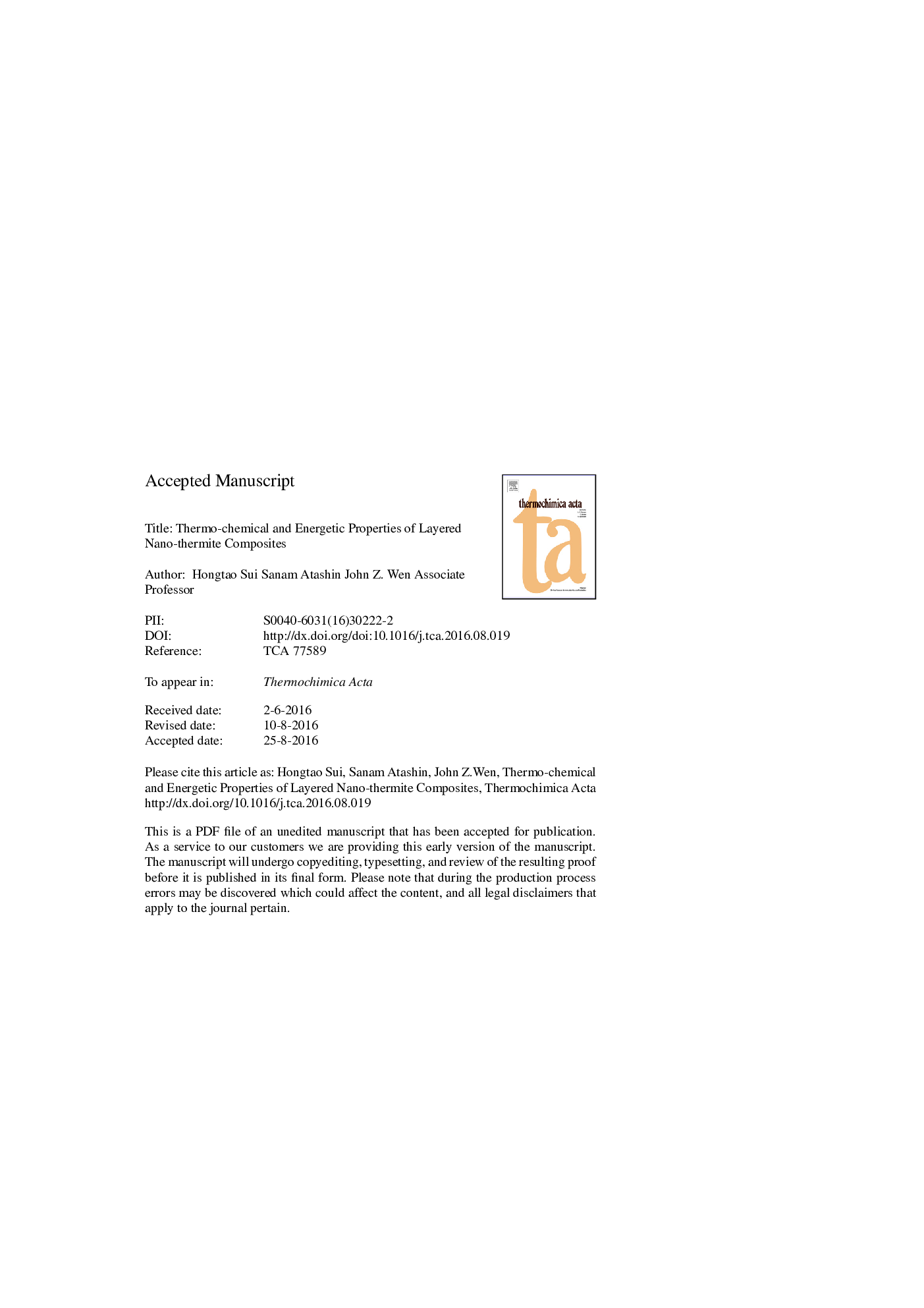| Article ID | Journal | Published Year | Pages | File Type |
|---|---|---|---|---|
| 4996099 | Thermochimica Acta | 2016 | 29 Pages |
Abstract
Thermochemical properties and microstructures of layered aluminum (Al) and iron oxide (Fe2O3) nano-thermite were investigated via thermogravimetric analysis (TGA), differential scanning calorimetry (DSC) and scanning electron microscopy (SEM) for developing a new type of metastable intermolecular composites (MIC). The nanoparticles of Al and Fe2O3 were dispersed in solution and deposited separately on stainless steel electrodes by means of the electrophoretic deposition (EPD) process. These nanoparticles were dispersed and deposited without any surfactant and additive, which eliminates potential contaminates in products. In order to produce layered structures, nanoparticles were deposited in a sequence which promotes effective bonding between two different types of nanoparticles. SEM images demonstrate a layered structure with the intimate contact between Al and Fe2O3. DSC data was collected to characterize the onset temperature and energy release per unit mass from the layered composites with different molar ratios of Al/Fe2O3. It is revealed, based on the consistent onset temperatures from different composites, that the ignition of Al and Fe2O3 layers is closely associated with oxygen which is produced from thermal decomposition of Fe2O3. In addition, the thickness of the reaction zone is restricted by the diffusion length of oxygen across the layer-to-layer interface, which results in a varying degree of reaction completion within the composite and subsequently the distinct energy release values per unit mass. The decomposition of Fe2O3 nanoparticles, diffusion path of oxygen and interfacial contact between Al and Fe2O3 layers are found to determine the energetic properties of layered thermite composites.
Related Topics
Physical Sciences and Engineering
Chemical Engineering
Fluid Flow and Transfer Processes
Authors
Hongtao Sui, Sanam Atashin, John Z. (Associate Professor),
